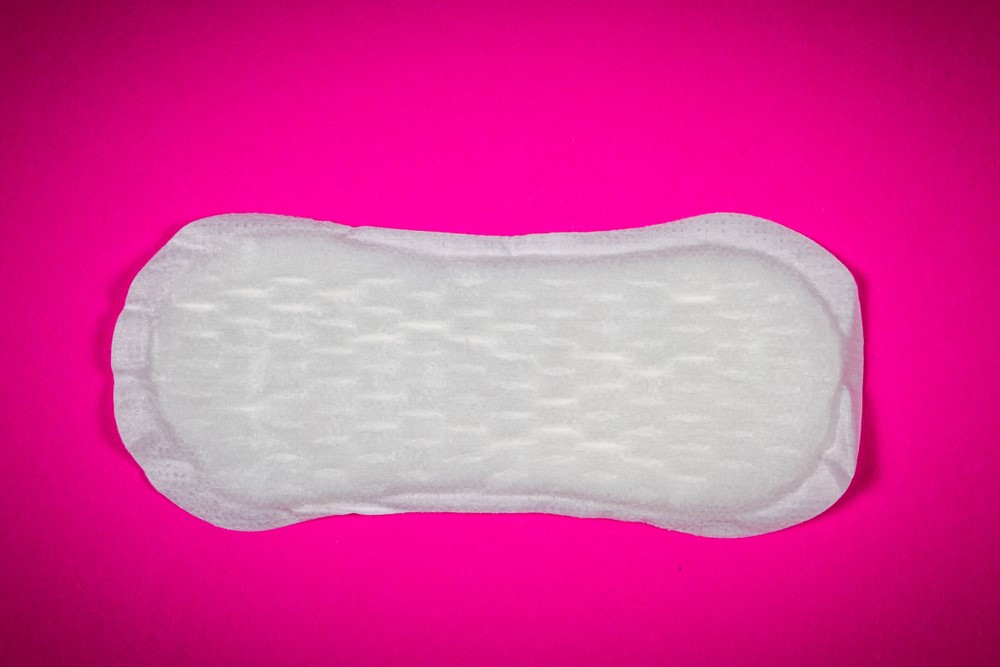
Incontinence can be a frustrating and embarrassing issue for seniors – one that can significantly impact their daily lives and overall well-being. These issues become more common as age-related changes affect muscle tone, bladder capacity, and control.
The emotional and psychological toll of leakage problems can lead to reduced social engagement, embarrassment, and even isolation.
Incontinence products are powerful for addressing such issues. These help to contain urine and feces, preventing clothes and furniture from getting soiled. Some products can even contain the contents of a full bladder.
Incontinence briefs are a common and popular option, yet many people turn to incontinence pads instead. While pads aren’t as absorbent as full incontinence briefs, they are much more discreet and easier to change.
Types of Incontinence Pads
Incontinence pads are designed to provide protection and manage urinary or fecal incontinence. There are various types of incontinence pads available, ranging from light to heavy absorbency, designed to cater to different levels of incontinence. Here’s a breakdown of the types of incontinence pads you might consider for seniors:
- Light Absorbency Pads: These pads are suitable for seniors with minor leakage or occasional dribbles. They are thin, discreet, and can be used with regular underwear and briefs for incontinence.
- Moderate Absorbency Pads: These pads are designed for seniors with more frequent or moderate leakage. They offer increased absorbency and often have a more contoured shape to fit the body comfortably.
- Maximum/Heavy Absorbency Pads: For seniors with significant incontinence issues, maximum absorbency pads offer the highest level of protection. They are designed to handle larger amounts of urine or fecal matter and are often bulkier.
- Gender-Specific Pads: Some pads are designed specifically for men or women to provide a better fit and targeted protection.
- Underpads or Bed Pads: These pads are placed on the bed or chair to protect against leaks. They are especially useful for seniors who spend a lot of time in bed or seated.
How to Choose Incontinence Pads

Depending on the requirements, the urgency and the serious concerns on the type of leakage, one of these incontinence pads can be suggested. However, when selecting incontinence pads for seniors, here are some considerations to keep in mind:
- Absorbency Level: Choose a pad with an absorbency level that matches the senior’s needs. Using a pad with too little absorbency can result in leaks, while using one with excessive absorbency might be uncomfortable.
- Comfort and Fit: Very important. Pads should be comfortable to wear and fit securely without causing irritation. Look for pads with contoured shapes so that it’s easy to walk while wearing them.
- Material: Opting for incontinence pads made from breathable materials is essential to prevent skin irritation and discomfort for seniors. These materials allow air circulation, reducing the likelihood of moisture buildup and skin chafing. Breathable pads also help maintain skin health by minimizing the risk of rashes or infections caused by prolonged contact with moisture. Seniors, especially those with sensitive skin, can benefit from the gentle and irritation-free experience.
- Odor Control: Some pads come with odor control features to help manage any unpleasant smells. To prevent any embarrassment, always opt for odor free material or features.
- Adhesive Strips: The adhesive strips adhere to the fabric of undergarments, creating a stable connection that maintains the pad’s position throughout daily activities. This feature is particularly valuable for seniors with limited mobility, as it offers them peace of mind and the freedom to move without constant adjustments. By securely anchoring the pad, adhesive strips enhance both the functionality and comfort of the pad, allowing seniors to go about their daily routines with confidence and minimal disruptions.
- Disposable vs. Reusable: Consider whether you prefer disposable pads for convenience or reusable pads for environmental reasons.
- Brand and Reviews: By exploring different options and reading user reviews, you can pinpoint pads renowned for their effectiveness, comfort, and reliability. Insights from other customers can offer valuable firsthand experiences, shedding light on factors such as absorbency, fit, durability, and overall satisfaction.
Helping seniors with incontinence pads requires patience, sensitivity, and a respectful approach. Let’s also dive into the step-by-step guide to assisting them with wearing incontinence pads:
How To Help Seniors With Incontinence Pads
Choose the Right Products
Ensure that you have the appropriate type and size of incontinence pads for the individual’s needs. There are different styles and absorbency levels available. Understanding the severity of incontinence and the individual’s lifestyle will guide your choice.
Light, moderate, and heavy absorbency options cater to different levels of leakage, while various styles accommodate personal preferences, including gender-specific designs. By tailoring your choice to the specific requirements of the individual, you can optimize comfort, protection, and overall effectiveness in managing their incontinence with dignity and confidence.
Remember that pads might not be enough. Many seniors will need a full incontinence brief overnight. Seniors with considerable incontinence may need one during the day as well.
Respect Privacy and Dignity
Recognize that discussing and addressing incontinence can be an embarrassing and sensitive matter for many. To ensure a compassionate conversation, choose a private and comfortable setting where they feel safe and at ease.
Start the conversation with gentle and understanding words, expressing your willingness to support and assist them in managing this challenge.
By creating an atmosphere of trust and respect, you pave the way for open communication and assure seniors that their feelings and dignity are valued throughout the process.
Explain the Importance
Stress the importance of using pads to maintain their comfort and hygiene. Highlight that these pads are designed to provide protection and minimize any discomfort or embarrassment caused by leakage.
By framing the conversation in a way that normalizes the experience and underscores the benefits of using incontinence pads, you can help seniors feel more at ease and willing to embrace this practical solution.
You could also highlight how the pads promote independence. In fact, if the senior changes the pad themselves, no one would ever know there was an issue. That’s much better than having an accident in public.
Involve Them in the Process
Whenever possible, involve the senior in choosing the pads. Letting them have a say in the decision-making process can help them feel more in control.
Show How to Wear Pads
Show them the different parts of the pad: the absorbent side and the adhesive side. Explain which side goes against the body and how to position it properly in their undergarments. If the pad has adhesive strips, demonstrate how to secure it in place.
You should also explain common mistakes with pads. For example, if the pad is placed too far back, it might not be effective.
Some people also try using two pads together to increase absorbency or use a pad within incontinence underwear. Such approaches don’t work well, as the pads have a waterproof backing.
Practice Proper Hygiene
Instruct them on cleaning the genital area before applying a new pad. Emphasize the importance of regular changing to prevent skin irritation or infection.
In some cases, you might need to help with cleaning or even do it for the senior. This is a common need for seniors with dementia, as their ability to clean themselves decreases over time.
They may also lose the ability to recognize that they’ve had an accident. If that’s the case, you’ll need to check regularly to see if they need a change.
Assist When Needed
If the senior has limited mobility, offer assistance in positioning the pad correctly.
Be respectful and maintain their dignity by providing assistance discreetly.
Comfort and Fit
Make sure the pad fits well and is comfortable. Avoid tight clothing that could cause discomfort or leakage. Double-check that the pad is placed properly to maximize its effectiveness.
Finding the right fit often requires some trial and error. You might need to experiment with multiple pad sizes and shapes. Or, some changes to the senior’s clothing might be needed to improve the effectiveness.
If the senior experiences regular leaks, they might need to switch to incontinence briefs instead of pads.
Disposal
Instruct them on proper disposal of used pads. Have a designated disposal method, such as wrapping the used pad in a plastic bag before discarding it.
Sometimes seniors will need to change pads away from home. If so, you might need to create a ‘go bag’ with all the needed items.
Regular Check-ins
Keep an open line of communication. Ask how they’re feeling about the pads and if they’re experiencing any issues or discomfort.
Maintain Supplies
Ensure a steady supply of incontinence pads. Check regularly to avoid running out.
Remember that the type of product they need may change as their incontinence progress. So, it might help to have a few different types on hand.
Professional Assistance
If the senior has difficulty managing incontinence or using the pads, consider involving a healthcare professional, like a nurse or caregiver, to provide guidance and assistance.
Remember that every individual is different, and their comfort levels vary. Always approach the situation with sensitivity and adapt your approach based on their needs and preferences.
Some additional tips:
- Use a calm and reassuring tone of voice when talking to the senior about incontinence.
- Avoid using words like “diaper” or “incontinence”. Instead, use more neutral terms like “pad” or “protection”.
- Make sure the senior is comfortable with the type of pad you choose. Let them try on different brands and sizes until they find one that fits well and is comfortable.
- Be patient and understanding. It may take some time for the senior to get used to wearing incontinence pads.
If you are caring for a senior with incontinence, it is important to be patient, understanding, and supportive. By following these tips, you can help them stay dry, comfortable, and confident.
Feeling Overwhelmed?
Check out our Caregiving Consulting service for personalized support and guidance.

Leave a Reply